General report of the AUS field trip/国際研修Iレポート Day 5 (3 Mar. 2019)
In the fifth day of our excursion, we began from Little Forest Plateau, Morton National Park, in which Nowra Sandstone and the Ulladulla Mudstone sitting beneath it are separated by a conformity. We can tell that the sedimentary environment of the mudstone to be from the deep-sea by using fossil records.

We then proceeded a little forward up onto Pointer Gap Lookout,where we can clearly observe a stepdown from the tableland we were standing on down to the coast. This stepdown, which extended all the way to the North, is the remaining feature of the breakdown of Gondwana.

We enjoyed lunch at Warden Head Lighthouse, which has a fantastic view over the ocean in this beautiful Sunday noontime.
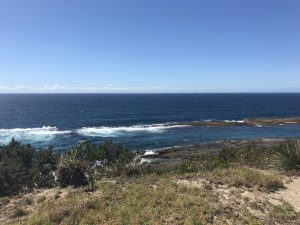
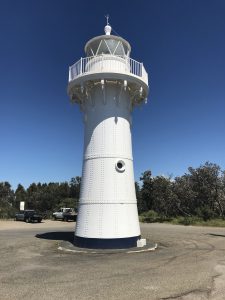
After the lunch, we proceeded onto Dolphin Point, located downwards in the sandstone layer. We observed drop stones, formed by mudstones with poorly-sorted sediments of very different grainsizes carried by icebergs to its sedimentary environment.

Ikaite, rock that formed under temperature and pressure conditions of -10~0 degrees Celsius and 10 bars, which indicates cold forming environment, can also be observed.

As Ikaite is moved away from its most stable environment, materials more stable in the environment replaced the original contents. This pseudomorph of Ikaite, called Glendonite, has the same shape of the cavity originally filled by the Ikaite, while differs in composition. We can observe both the Glendonite and also empty cavities after the pseudomorph itself gets eroded away in the field.
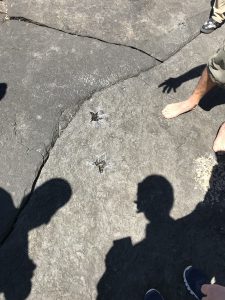
Fossils of sea liles, Brachiopoda, as well as bivalvia, can also be observe in this formation. In addition, fold-like structure caused by slumping can be observed.

We observed the snapper point formation at Merry Beach. Comparing to the stratum at dolphin point, the formation here is sandier. In this area we can observe quartz-rich ice rafted debris (IRD) There were also several fossils of bivalve, scallops and sea lilies.
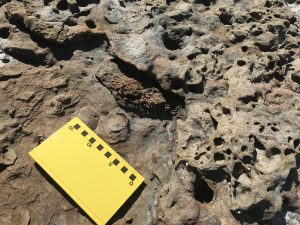

After observing the stratum, we saw many kangaroos at close distance and enjoyed taking pictures of them.
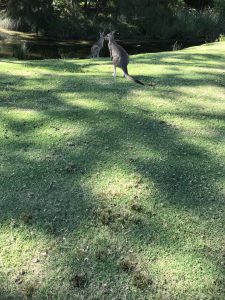
In Bawley Beach, what we observed first are tillites, which were transported by glaciers. The feature of tillites is the combination of rocks with widely-ranging roundness, grain sizes, and lithologies.

There are also ripple marks in wavelengths of tens of centimeters, which were formed by breaking waves.
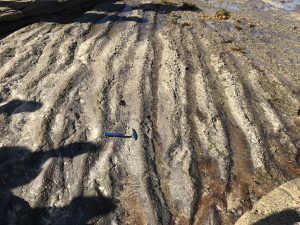
On top of the layer that includes ripple marks, we can find cross-bedding, bioturbation and tillites. It shows that the contact surface between the glacier and the bedrock is a frozen bed, which means the layer under ice was frozen hence not eroded. Features in the formation can be related to sea level changes and local-scale isostasy effects.


